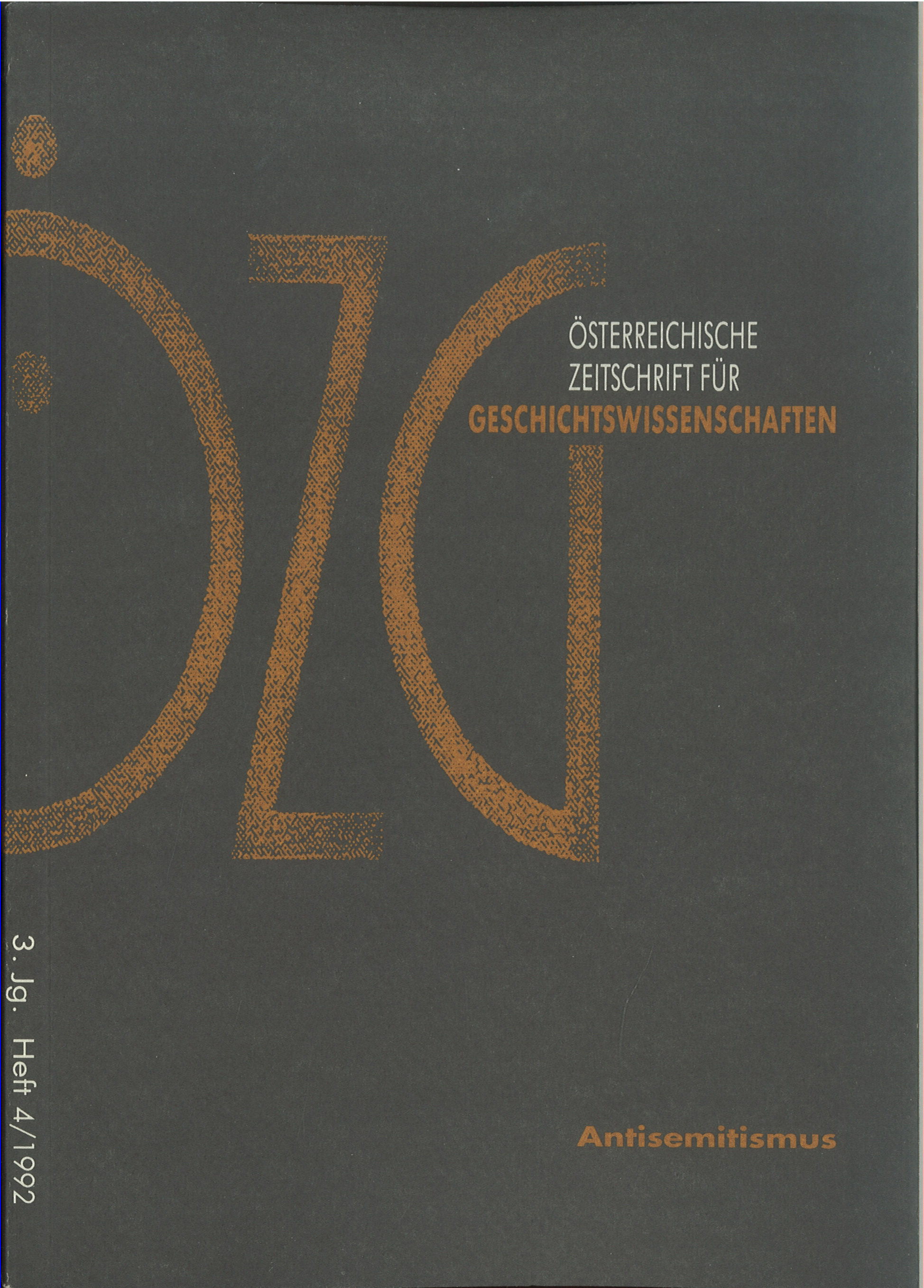Zum nachnazistischen Antisemitismus in Österreich
DOI:
https://doi.org/10.25365/oezg-1992-3-4-4Abstract
Anti-Semitic manifestations are part of the history of the Second Austrian Republic. The paper tries to review and to reconsider anti-Semitic actions, within the theoretical framework of Erving Goffman, as taking place at the frontstage of society and behind the scenes. The Public consensus did not allow anti-Semitic actions at the frontstage after 1945. This is regarded as an element of discontinuity in comparison to the period before 1938. Nevertheless, anti-Semitic utterances and attitudes still can be found, mainly behind the scenes. These basic perspectives lead to a critical review of the concepts and findings of Austrian survey research on anti-Semitism. The article suggests that anti-Semitism should not be seen so much as inherent in a person's character, but as a specific social action which will be performed in specific social situations. This has implications for the development of research concepts, as well as for public strategies to prevent anti-Semitism.


